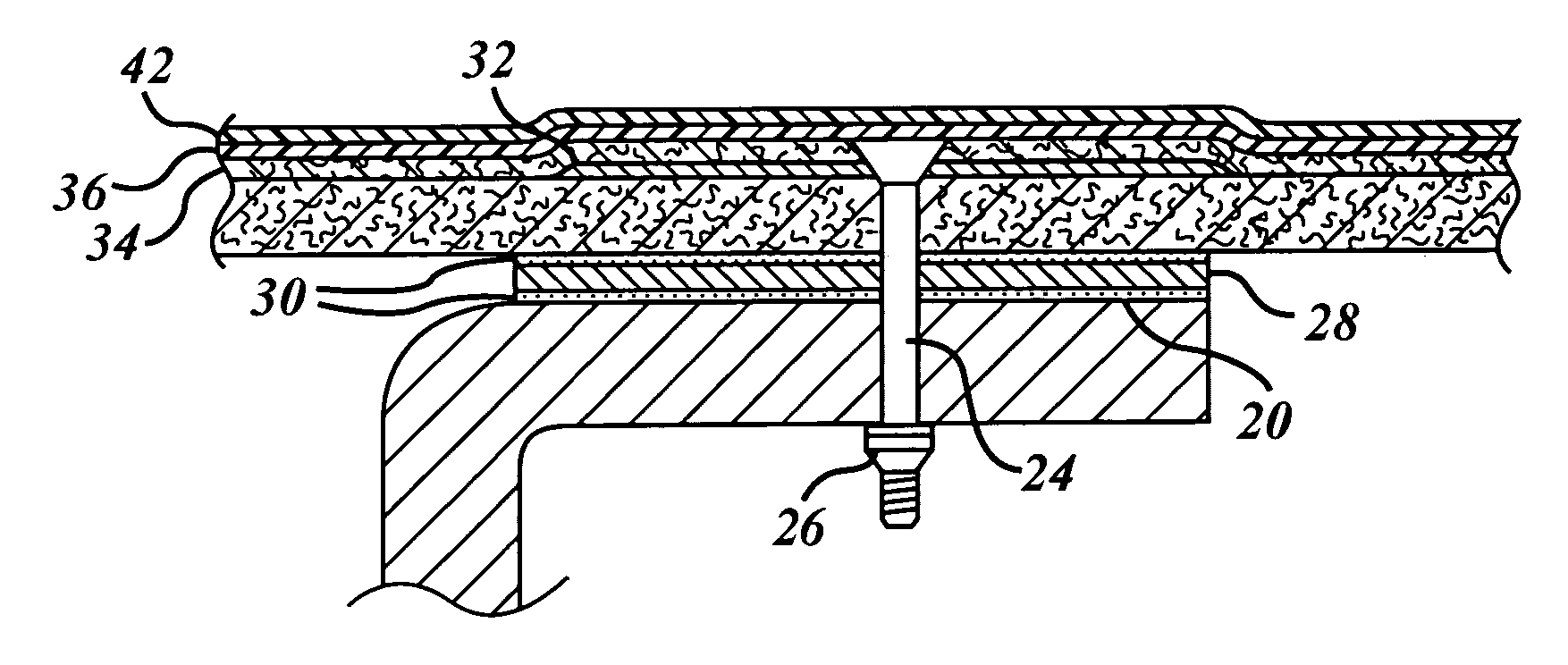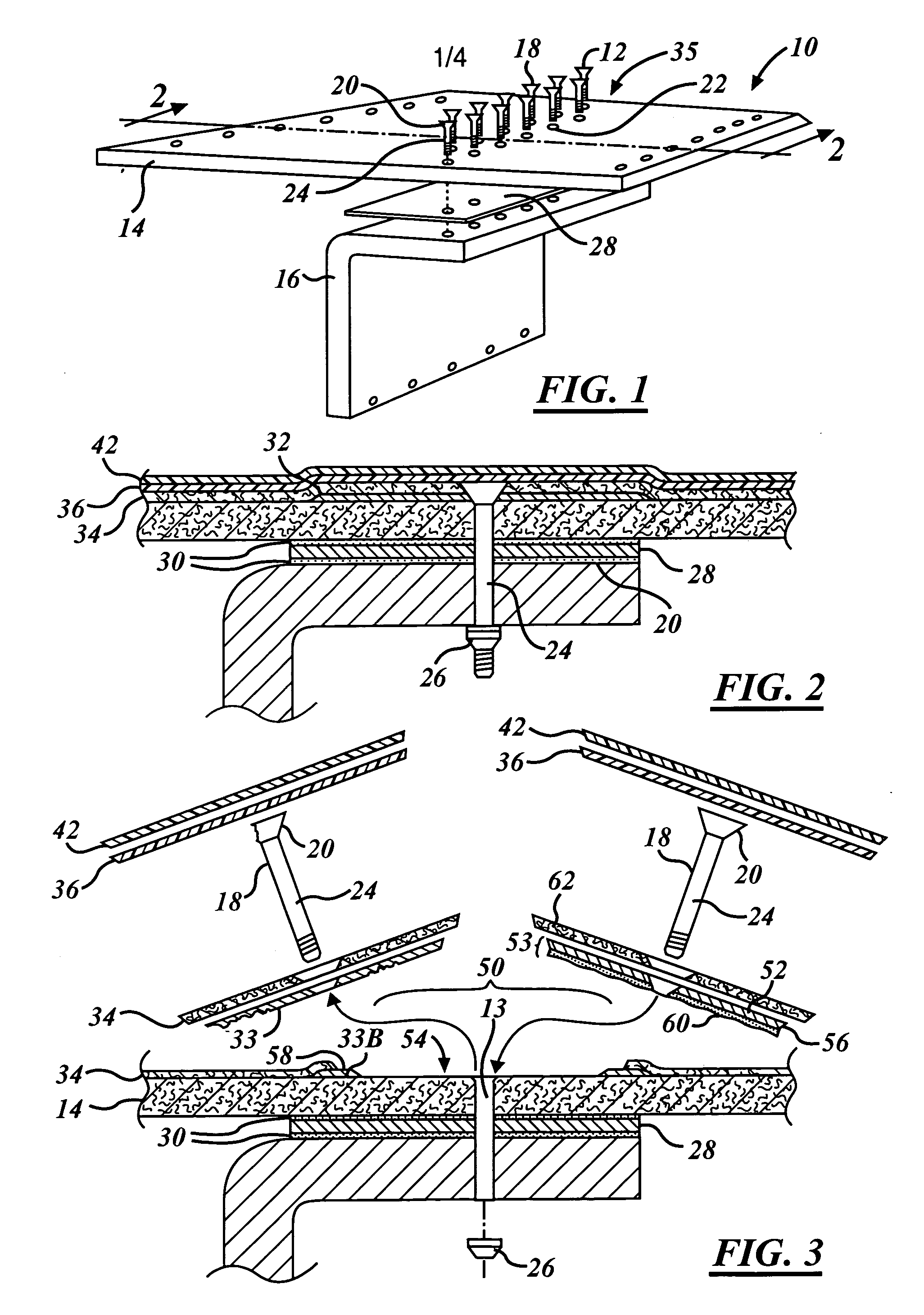Copper grid repair technique for lightning strike protection
a copper grid and repair technique technology, applied in the field of copper grid repair technique, can solve the problems of increasing the potential difference produced across the ply structure, no readily available electrically conductive path for discharging current, arcing and dangerous sparks, etc., to maintain the integrity of the lightning prevention system, quick and cost-effective repairs, and reduce resistance paths
- Summary
- Abstract
- Description
- Claims
- Application Information
AI Technical Summary
Benefits of technology
Problems solved by technology
Method used
Image
Examples
Embodiment Construction
[0022] Referring now to FIGS. 1 and 2, a section and perspective view of a portion of a wing structure 10 of a commercial airplane showing a plurality of fasteners 12 is shown securing a skin panel 14 of an aircraft structure to an inner substructure 16, or spar 16, comprising the wall of a fuel tank.
[0023] The skin panel 14 and the spar 16 are made of carbon fiber composite material of low weight and high strength and stiffness formed by conventional methods well known in the art. For example, in one preferred form, the skin panel 14 is formed from 34 plies of an aircraft quality, machine lay-up structural carbon fiber / epoxy tape laid in a 50 / 40 / 10 orientation and having an overall thickness approximately 0.2516 inches, while the spar 16 consists of 44 plies of a hand lay-up version of aircraft quality, structural carbon fiber / epoxy tape laid in a 25 / 50 / 25 layup and having an overall thickness of about 0.3256 inches. Both the skin panel 14 and spar 16 are primed on both the tool a...
PUM
| Property | Measurement | Unit |
|---|---|---|
| temperature | aaaaa | aaaaa |
| temperature | aaaaa | aaaaa |
| temperature | aaaaa | aaaaa |
Abstract
Description
Claims
Application Information
 Login to View More
Login to View More - R&D
- Intellectual Property
- Life Sciences
- Materials
- Tech Scout
- Unparalleled Data Quality
- Higher Quality Content
- 60% Fewer Hallucinations
Browse by: Latest US Patents, China's latest patents, Technical Efficacy Thesaurus, Application Domain, Technology Topic, Popular Technical Reports.
© 2025 PatSnap. All rights reserved.Legal|Privacy policy|Modern Slavery Act Transparency Statement|Sitemap|About US| Contact US: help@patsnap.com



